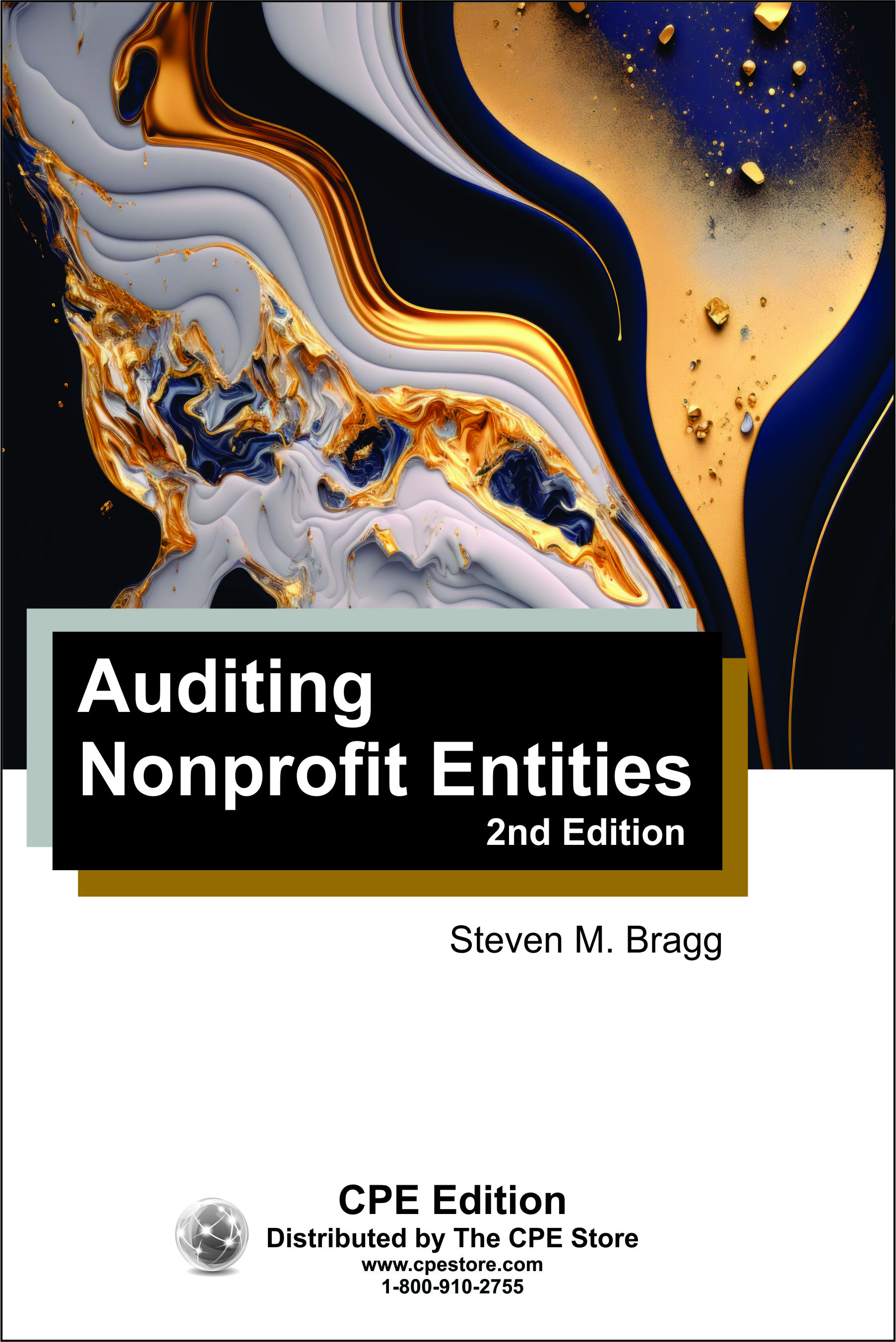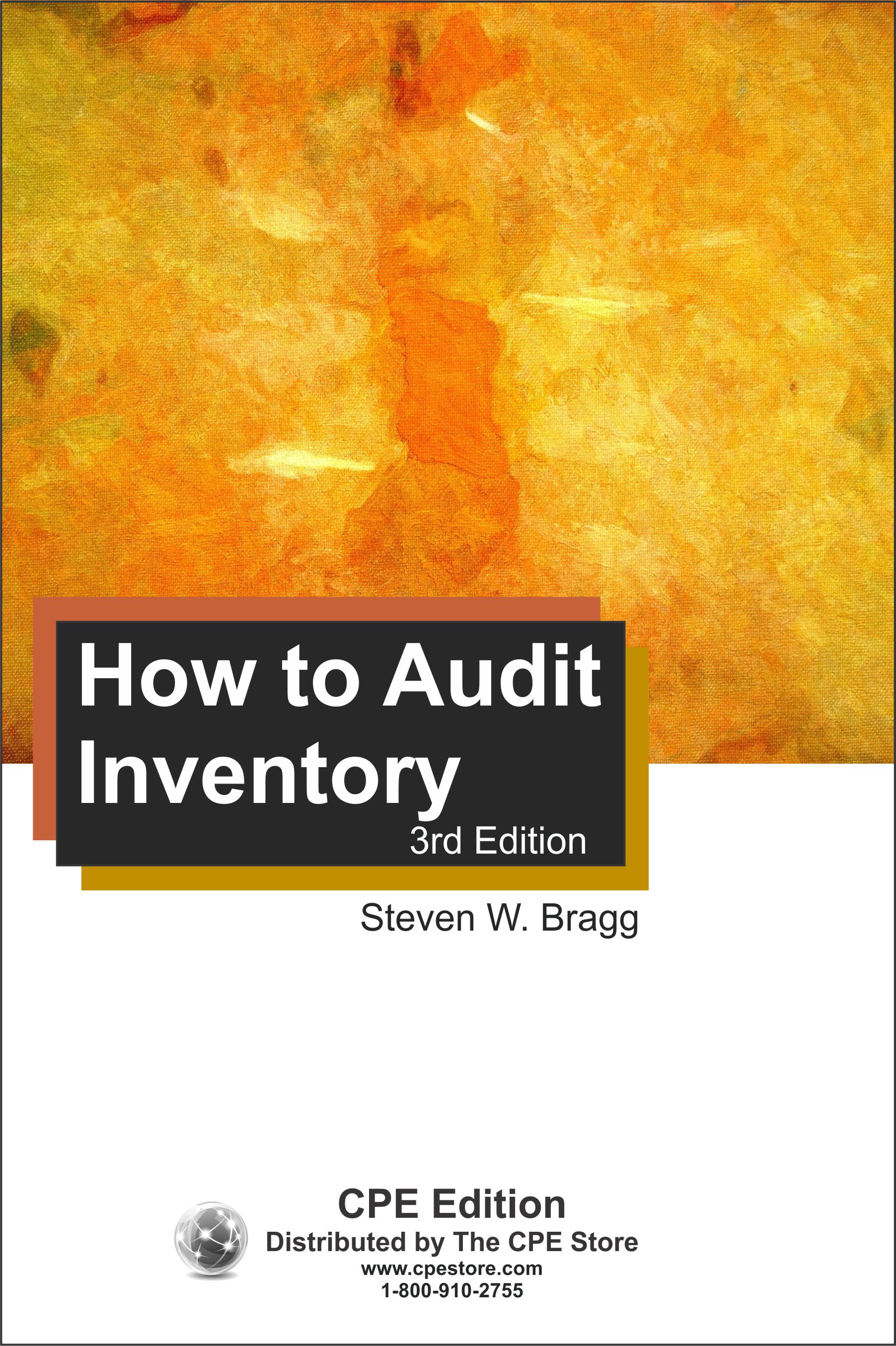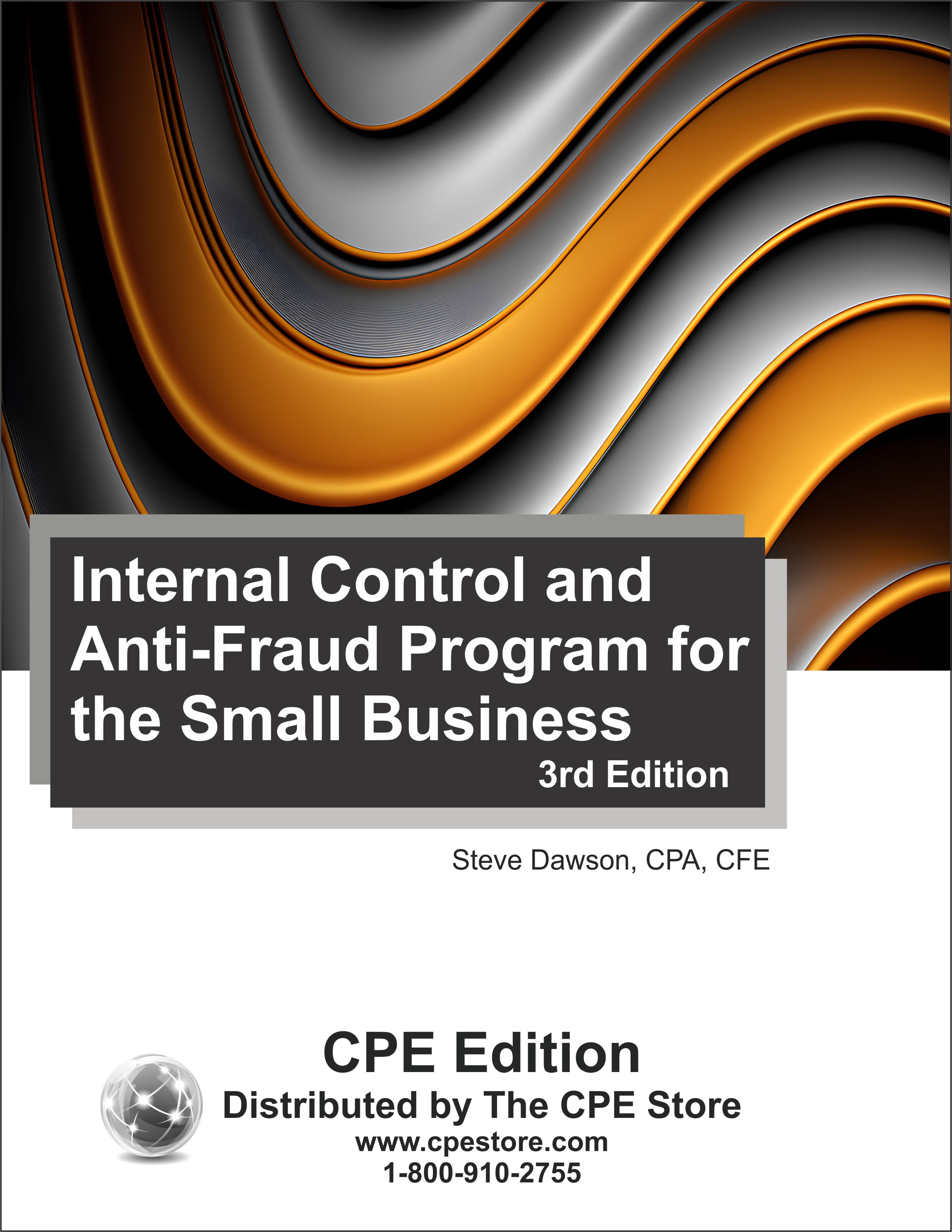Courses
NASBA Auditing Courses
Status | Title | Credit Hours |
|---|---|---|
| Auditing and Other Assurance Services | (4 hours) | |
| Auditing Developments | (16 hours) | |
| Auditing Nonprofit Entities | (3 hours) | |
| Conducting Compilation Engagements | (1 hours) | |
| Conducting Review Engagements | (2 hours) | |
| How to Audit Cash | (1 hours) | |
| How to Audit Equity | (1 hours) | |
| How to Audit Fixed Assets | (2 hours) | |
| How to Audit for Fraud | (3 hours) | |
| How to Audit Inventory | (2 hours) | |
| How to Audit Liabilities | (1 hours) | |
| How to Audit Receivables | (2 hours) | |
| How to Audit Revenue | (2 hours) | |
| How to Conduct an Audit Engagement | (17 hours) | |
| Internal Auditing Guidebook | (10 hours) | |
| Internal Control and Anti-Fraud Program for the Small Business | (7 hours) | |
| Internal Control and Fraud Detection | (8 hours) | |
| Materiality in a Review of Financial Statements (SSARS 25) | (4 hours) | |
| Standards for Accounting and Review Services (SSARS 21-26) | (10 hours) |
Auditing and Other Assurance Services

Course number: AA958201
Auditing and assurance services are important services provided by CPAs. This course will identify the different types of audits and the different types of assurance services. It will also define the importance of ethics in the CPA and auditing professions. This course will describe the different organizations that create and enforce ethical guidelines. Finally, this course will describe the importance of independence for auditors. Course level: Basic. Prerequisites: None. Course includes integrated text and study guide, final exam, and grading service.NASBA field of study: Auditing Course credit: 4 hours
Printed Version$39
PDF$39
Colleague Test(s)$15
Contents
Auditing Developments

Course number: AA771411
Part of planning an audit involves consideration of the business and economic environment in which the client operates. To deal with the volatility in the business climate, auditors should focus their efforts in key areas and should take lessons from litigation. The objective of this course is to address the latest developments affecting audit engagements, including accounting and auditing engagement issues during post-COVID-19 and the impact of the pandemic on an entity’s ability to continue as a going-concern. This course provides an overview of auditing estimates and audit evidence, and changes made to the auditor’s understanding of the entity and its environment, risk assessment procedures, using the work of specialists as audit evidence, changes to compliance audits, and more. These changes are found in the newly issued SAS Nos. 142–149. Course level: Basic. Prerequisites: None. Course includes integrated text and study guide, final exam and grading service.NASBA field of study: Auditing Course credit: 16 hours
Printed Version$119
PDF$119
Colleague Test(s)$50
Contents
Auditing Nonprofit Entities

Course number: AA422702
Nonprofit entities present significant auditing challenges, since their reported results are closely tied to the nature of the contributions they receive, donor restrictions on the use of those contributions, and the need to present a high level of program effectiveness to donors. In the Auditing Nonprofit Entities course, we examine how the auditor can navigate these challenges by delving into nonprofit controls, as well as audit procedures that are specific to the industry. Particular attention is paid to the auditing of contributions, donor restrictions, endowment funds, fund-raising expenses, and split-interest agreements. Course level: Basic. Prerequisites: None. Course includes integrated text and study guide, final exam, and grading service.NASBA field of study: Auditing Course credit: 3 hours
Printed Version$29
PDF$29
Colleague Test(s)$15
Contents
Conducting Compilation Engagements

Course number: AA483403
A compilation engagement involves a greatly reduced set of activities from a review engagement, and especially from an audit. In Conducting Compilation Engagements, we describe the steps required to complete a compilation, as well as every other aspect of a compilation engagement, including the engagement letter and the compilation report. The course also includes the requirements for an engagement in which the accountant is called upon to prepare financial statements for a client. This course is based on SSARS 21, Statements on Standards for Accounting and Review Services: Clarification and Recodification. Course level: Basic. Prerequisites: None. Course includes integrated text and study guide, final exam, and grading service.NASBA field of study: Auditing Course credit: 1 hour
Printed Version$19
PDF$19
Colleague Test(s)$12
Contents
Conducting Review Engagements

Course number: AA483303
A review engagement involves a significantly reduced set of activities from an audit engagement, with a focus on analytical procedures and inquiries. In Conducting Review Engagements, we describe the nature of these analytical procedures and inquiries, as well as every other aspect of a review engagement, including the engagement letter, representation letter, and accountant’s review report. This course is based on SSARS 21, Statements on Standards for Accounting and Review Services: Clarification and Recodification. Course level: Basic. Prerequisites: None. Course includes integrated text and study guide, final exam, and grading service.NASBA field of study: Auditing Course credit: 2 hours
Printed Version$19
PDF$19
Colleague Test(s)$12
Contents
How to Audit Cash

Course number: AA442202
This course clarifies for the auditor every action needed to audit cash. It describes the characteristics of cash from an auditing perspective, and then goes on to describe the activities required to audit a client’s cash accounts. The course contains extensive material about cash-related controls, fraud issues, and the construction of a bank reconciliation and a proof of cash. Course level: Basic. Prerequisites: None. Course includes integrated text and study guide, final exam, and grading service.NASBA field of study: Auditing Course credit: 1 hour
Printed Version$19
PDF$19
Colleague Test(s)$12
Contents
How to Audit Equity

Course number: AA442301
This course clarifies for the auditor every action needed to audit equity. It describes the characteristics of equity from an auditing perspective, and then goes on to describe the activities required to audit the equity portion of the balance sheet. The course also covers the different types of controls that a firm can apply to its equity transactions. Background information concerning the accounting for equity is inserted into the text as needed. Course level: Basic. Prerequisites: None. Course includes integrated text and study guide, final exam, and grading service.NASBA field of study: Auditing Course credit: 1 hour
Printed Version$19
PDF$19
Colleague Test(s)$12
Contents
How to Audit Fixed Assets

Course number: AA442403
This course clarifies for the auditor every action needed to audit fixed assets. It describes the characteristics of fixed assets from an auditing perspective, and then goes on to describe the activities required to audit both tangible and intangible fixed assets. The course also covers the auditing of depreciation, as well as asset impairment losses. Further, the course materials note several issues that can assist in the planning for an audit of fixed assets. Background information concerning the accounting for fixed assets is inserted into the text as needed. Course level: Basic. Prerequisites: None. Course includes integrated text and study guide, final exam, and grading service.NASBA field of study: Auditing Course credit: 2 hours
Printed Version$19
PDF$19
Colleague Test(s)$12
Contents
How to Audit for Fraud

Course number: AA442603
This course shows the auditor how to detect fraud. It does so by discussing fraud risk indicators and other clues indicating the presence of fraud, and itemizes the many extended audit procedures that can be used to detect traces of fraud. The course also notes who is responsible for fraud prevention and detection, and covers the different ways in which financial statements can be fraudulently misstated. Course level: Basic. Prerequisites: None. Course includes integrated text and study guide, final exam, and grading service.NASBA field of study: Auditing Course credit: 3 hours
Printed Version$29
PDF$29
Colleague Test(s)$15
Contents
How to Audit Inventory

Course number: AA442803
This course clarifies for the auditor every action needed to audit inventory. It describes the characteristics of inventory from an auditing perspective, and then goes on to describe the steps required to audit inventory. Background information concerning inventory is also included, such as physical inventory counts, the lower of cost or market rule, and inventory cost layering. Course level: Basic. Prerequisites: None. Course includes integrated text and study guide, final exam, and grading service.NASBA field of study: Auditing. Course credit: 2 hours
Printed Version$19
PDF$19
Colleague Test(s)$12
Contents
How to Audit Liabilities

Course number: AA442901
This course clarifies for the auditor every action needed to audit liabilities. It describes the characteristics of liabilities from an auditing perspective, and then goes on to describe the steps required to audit many types of liabilities, including accounts payable, accrued liabilities, and debt. There is a particular emphasis on the search for unrecorded liabilities. Background information concerning the accounting for liabilities is inserted into the text as needed. Course level: Basic. Prerequisites: None. Course includes integrated text and study guide, final exam, and grading service.NASBA field of study: Auditing Course credit: 1 hour
Printed Version$19
PDF$19
Colleague Test(s)$12
Contents
How to Audit Receivables

Course number: AA443101
This course clarifies for the auditor every action needed to audit receivables. It describes the characteristics of receivables from an auditing perspective, and then goes on to describe the steps required to audit receivables. Background information concerning receivables is also included, such as the allowance for doubtful accounts, accounting for notes receivable, receivable fraud, and receivable controls. Course level: Basic. Prerequisites: None. Course includes integrated text and study guide, final exam, and grading service.NASBA field of study: Auditing Course credit: 2 hours
Printed Version$19
PDF$19
Colleague Test(s)$12
Contents
How to Audit Revenue

Course number: AA489401
This course clarifies for the auditor every action needed to audit revenue. It describes the characteristics of revenue from an auditing perspective, and then goes on to describe the steps required to audit revenue. Background information concerning revenue recognition is also included, such revenue recognition rules, consignment arrangements, customer acceptance issues, revenue fraud, and revenue controls. Course level: Basic. Prerequisites: None. Course includes integrated text and study guide, final exam, and grading service.NASBA field of study: Auditing Course credit: 2 hours
Printed Version$19
PDF$19
Colleague Test(s)$12
Contents
How to Conduct an Audit Engagement

Course number: AA421402
The auditor needs to conduct audits as efficiently and thoroughly as possible. In How to Conduct an Audit Engagement, we describe every aspect of an audit engagement, including the engagement letter, audit planning, audit sampling, audit evidence, fraud considerations, audit documentation, auditor reports, and much more. Throughout, there is an emphasis on the practical aspects of auditing. This course is derived in part from the Statements on Auditing Standards. Course level: Basic. Course includes integrated text and study guide, final exam, and grading service.NASBA field of study: Auditing Course credit: 17 hours
Printed Version$119
PDF$119
Colleague Test(s)$50
Contents
Internal Auditing Guidebook

Course number: AA422102
A successful internal audit program is an essential tool for determining how well an organization’s processes and controls are functioning. It can identify high-risk areas and determine how well existing controls are mitigating risks. In the Internal Auditing Guidebook, we cover all aspects of the internal auditing function, including governance, risk management, internal controls, fraud prevention and detection, audit evidence, audit sampling, data analytics, how to conduct engagements, and much more. This course is designed to assist in the development of a fine-tuned internal audit department that can help to minimize risks and provide valuable consulting advice to every area of a business. Course level: Basic. Prerequisites: None. Course includes integrated text and study guide, final exam, and grading service.NASBA field of study: Auditing Course credit: 10 hours
Printed Version$79
PDF$79
Colleague Test(s)$30
Contents
Internal Control and Anti-Fraud Program for the Small Business

Course number: AA666503
This course is a practical guide to protection for businesses NOT subject to the Sarbanes-Oxley Act. It is geared specifically toward private, non-public small businesses and their unique needs in the realm of fraud protection. Covering all elements of an internal control structure applicable to the small business community, this course provides a step-by-step roadmap for designing and implementing an effective, efficient internal control structure/anti-fraud program tailored to your business’s particular needs. Case studies are used throughout to illustrate internal control weaknesses and the fraud that can result, and follow-up analysis describes the controls that would have reduced the probability of fraud had they been in place. You’ll learn how to analyze your company’s internal control issues, and implement a robust system for fraud prevention. The step-by-step internal control program includes the following: understanding the five elements of internal control, avoiding gaps in protection with relevant controls, designing the ultimate anti-fraud program, and implementing internal control tailored to your needs. Course level: Basic. Prerequisites: None. Course includes integrated text and study guide, final exam, and grading service.NASBA field of study: Auditing Course credit: 7 hours
Printed Version$69
PDF$69
Colleague Test(s)$20
Contents
Internal Control and Fraud Detection

Course number: AA762402
This course presents the principles of internal control to help readers understand the nature and context of control, such as limitations of internal controls, the most recognized controls frameworks (e.g. COSO Framework, Green Book), and some common and important control procedures. It also includes steps on how to identify risks and controls, advice on how to assess the adequacy of controls, a discussion of how to reach a fair assessment, and documentation requirements for evidences of effective controls. In addition, the course discusses requirements related to performing an integrated audit: SAS 130 and AS No. 2201. Although these auditing rules are mandatory for external auditors and not for management, management should give consideration to following the approach described in these requirements. Includes an illustration of potential internal controls weaknesses involving accounting and financial reporting cycles, along with examples of compensating controls. It provides sample audit programs of key processes. It also incorporates appendices including: an example of management internal control report, a SOX Section 404 management compliance checklist, financial reporting controls and information systems checklist for each key cycle (e.g. revenue, inventory, financing), and a computer applications checklist. Course level: Basic. Prerequisites: None. Course includes integrated text and study guide, final exam, and grading service.NASBA field of study: Auditing Course credit: 8 hours
Printed Version$69
PDF$69
Colleague Test(s)$25
Contents
Materiality in a Review of Financial Statements (SSARS 25)

Course number: AA771301
The purpose of this course is to inform the reader of the various changes made to the compilation and review codification by the issuance of SSARS No. 25, Materiality in a Review of Financial Statements and Adverse Conclusions, include changes made to AR-C 60—General Principles, AR-C 70—Preparation of Financial Statements, AR-C 80—Compilation Engagements, and AR-C 90—Review of Financial Statements. Topics include expanding use of the disclaimer report in a preparation engagement, changes involving the reporting on the contractual basis of accounting, new requirements to define materiality in a review engagement, expanded inquiries and management representations in a review engagement, the new modified conclusion (qualified and adverse conclusion) reporting changes, guidance on going concern in a review engagement, and more. Course level: Basic. Prerequisites: None. Course includes integrated text and study guide, final exam, and grading service.NASBA field of study: Auditing Course credit: 4 hours
PDF$39
Colleague Test(s)$15
Contents
Standards for Accounting and Review Services (SSARS 21-26)

Course number: AA752106
The purpose of this course is to inform the reader of the various changes made to the compilation and review codification by SSARS No. 21 as amended by SSARS No. 22, Compilation of Pro Forma Financial Information, SSARS No. 23, Omnibus Statement on Standards for Accounting and Review Services—2016, SSARS No. 24, Omnibus Statement on Standards for Accounting and Review Services—2018, SSARS No. 25, Materiality in a Review of Financial Statements and Adverse Conclusions, and SSARS No. 26: Quality Management for an Engagement Conducted in Accordance With Statements on Standards for Accounting and Review Services. The course addresses the three types of engagements that can be performed under the SSARSs: a preparation of financial statements engagement, a compilation engagement, and a review engagement. Course level: Basic. Prerequisites: None. Course includes integrated text and study guide, final exam, and grading service.NASBA field of study: Auditing Course credit: 10 hours
PDF$79
Colleague Test(s)$30
Contents